Thomas Huber: a ground fall, Latok I and the gratitude for being alive
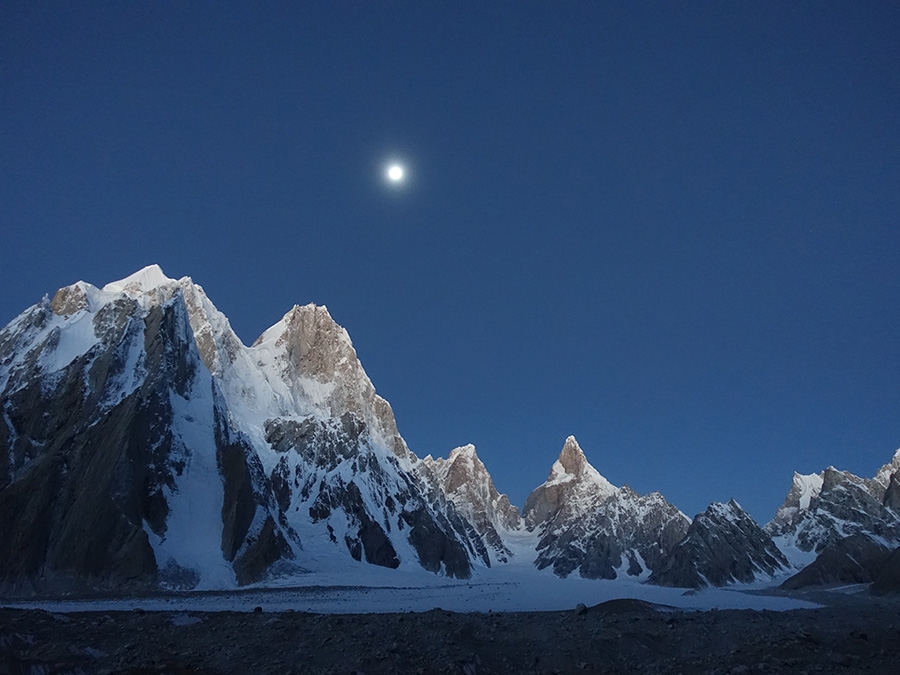
 1 / 31
1 / 31 archivio Thomas Huber
archivio Thomas Huber
Germany’s Thomas Huber has just gone through three intense and tumultuous months. At the start of July the talented 49-year-old mountaineer miraculously survived a ground fall at Brendelwand; a slight distraction and a too short rope that he was abseiling on were the ingredients for Huber’s 16 meter fall to the ground. He was immediately taken to intensive care where he was diagnosed with a fractured skull and underwent surgery. Then, almost as miraculously, he recovered in record time and not even five weeks after the accident he departed for Pakistan’s Karakorum range. The objective: the unclimbed North Face of Latok I (7145m) together with the German’s Toni Gutsch and Sebastian Brutscher. Or, should conditons prove inhospitable, at attempt at completing the route climbed to within 150 meters of the summit by the Americans Jim Donini, George Lowe, Jeff Lowe and Michael Kennedy during their legendary 26-day ordeal back in 1978.
Thomas Huber knows this corner of the world on the Choktoi glacier well. In 1997, together with his younger brother Alexander, with Gutsch and America’s Conrad Anker, he forged a new route up the West Face of Latok II (7108m). In 2001 he made the first ascent of nearby Ogre III and only the second ascent of Ogre (7285m) together with Switzerland’s Urs Stoecker and Iwan Wolf, 24 years after the epic 1977 first ascent carried out by Chris Bonington and Doug Scott.
Huber’s knowledge of the Ogre was put to good use just a few days after the team’s arrival at Base Camp: American’s Kyle Dempster and Scott Adamson were engaged on the unclimbed North Face of Ogre II (6960m), but were soon reported missing. Huber, Gutsch and Brutscher immediately sprung into action, located the Americans’ skis at the base of the mountain, but due to bad weather were forced to return to base camp. Then, 10 days after the last sighting, finally the weather cleared up and Thomas made two reconnaissance helicopter flights up to 7200m - he took medicine with him since he did not know whether the swift ascent to that altitude, so soon after his accident, would be detrimental. Unfortunately there was no sign whatsoever of the Americans and even the difficult and dangerous ascent to 6200m along the mountain's NW Ridge a few days later provided no further clues. Much to their dismay the rescue operation was called off, and all that remained was the pain of the immense loss of two of the world’s most talented and promising alpinists.
Despite this turmoil, the dream of climbing the North Face of Latok I continued. However, despite being fully acclimatized, destiny wanted things to turn out differently once again…
MY RETURN TO WHERE IT ALL BEGAN by Thomas Huber
My way back to where everything had begun was exciting. I walked it alone. I crossed the steep path to the Brendelwand. Admittedly, my heart started beating faster as I returned to where I had taken a 16-meter ground fall. I took a deep breath, walked around the corner and suddenly I was there! It was a powerful moment, I could literally feel the energy that had enabled me to survive and sat down when I had landed. Even the rope, far too short, still hung from the rock face and now I realised that all this was due to far more than an unquantifiable amount of luck. I had been allowed to survive the fall and this filled me with an indescribable feeling of gratitude! Between that fateful moment and the present lie almost 3 months that have left a profound mark on my life.
As I wandered through the Panmah Valley towards Choktoi I felt full of energy, overcome by euphoria. I was with Toni Gutsch, Sebi Brutscher, Max Reichel and the Americans Jim Donini, George Lowe and Thom Engelbach. For me, Choktoi represents the Stonehenge of mountaineering, a place bursting with energy yet shrouded in secrets; its radiance is magnetic.This area promises adventure and is surrounded by the wildest mountains in the world: Latok III, Latok II, Latok I, Ogre II and Ogre. George and Jim wanted to climb a 6000er with Thom and return to the place where, in 1978, they had written mountaineering history with their "nigh ascent" of the North Ridge of Latok I. Their 26-day adventure has often been hailed as "The Most Remarkable Failure in Climbing History!"
After 4 days of hiking, on 23 August we reached base camp at 4400 meters above sea level, the indescribably beautiful Latok group unfolding before us. It was nice to be back, the weather was good and I pitched my tent in exactly the same place as last year. The next day, at around noon, Gafour came to greet us. He was the guide of Kyle Dempster and Scott Adamson, the American expedition that had set up base camp another 2 hours up the valley, on the edge of a rocky moraine. He conveyed kind greetings from the two Americans, who at precisely that moment were climbing the North Face of Ogre II. Gafour had noticed lights high up on the North Face the previous evening, and today, he thought, might be their summit day.
The weather though was not ideal, at least not up on Ogre II. The mountain was wrapped in thick clouds and it seemed very windy. Maybe they’d be lucky, if not, they’d certainly descend. After drinking a cup of tea, Gafour bid farewell. We gave him a radio and I looked forward to hearing from Kyle and Scott. I’d met the boys last year, two full-blown alpinists, full of fun and determination. When they heard about my accident, they immediately wrote to me saying that they expected I'd recover quickly and that we’d meet at Choktoi in August.
The weather was bad during the following days, it continued to snow and we still had no news from Kyle and Scott. After four days we slowly started to get worried. After 6 days we made first contact with their families and friends in America. With their consensus we headed towards Ogre II. We found their skis at the "icefall", the wild glacier tongue that plummets down the North Face, but apart from this there was no other trace. We decided to camp here. During the night however it started to snow heavily once again and, in these conditions, there was absolutely no way through the icefall. We returned to base camp and were now aware that we might have to brace ourselves for the worst.
The only chance the two still had, if they were still alive, was via a helicopter rescue attempt. But this needs good weather! A rescue operation was organised from America, $190,000 were raised through Facebook and everyone hoped for a miracle. A miracle of sorts had already happened twice in these mountains: in 1977, when Doug Scott broke both legs at 7100 meters on the Ogre and managed to crawl back into base camp after enduring 10 days of bad weather. And in 1978, when hopes faded for Jim Donini, Michael Kennedy, Jeff and George Lowe after they had been away, often during severe stints of bad weather, for three weeks on Latok I. Nevertheless they returned, after having endured 26 days on the North Ridge.
On September 3, ten days after the last sign of life, finally the weather improved. Not a cloud in sight! The Pakistani military flew into the Choktoi area with 2 helicopters and since I knew the area, I jumped in. We circled the mountain for an hour, flew up to 7200 meters. It’s simply unbelievable how well the "Ecureuil" can fly at this extreme altitude. Throughout the flight I had a fantastic view onto the mountains from a completely different perspective, but I couldn’t really enjoy it. We flew along their route on the North Face several times, traced their possible descent down the Northwest Ridge, flew above crevasses, valleys, and mountain flanks. In the end though we came to the tragic conclusion that there would be no third miracle in the Latok group. There was absolutely no trace of Scott and Kyle. Passing on this message, and thereby dashing their families and friends’ hopes of survival, proved difficult. I felt their pain, wanted to help them yet was helpless. I saw from the outside what happens when two passionate and psyched mountaineers take on their challenge and fail to return. In the end, for those who stay behind, all that remains is the overwhelming feeling of being absolutely powerless.
After these highly emotional days it was difficult to think clearly once again. The best thing we could do was to go and climb! Toni, Sebi, and I planned to ascend Ogre II via the NW Ridge in order to acclimatise properly for the North Face of Latok I, and perhaps also to find clues as to the whereabouts of the Americans. We reached 6200 meters, the last camp below the summit, before unexpected bad weather forced us to retreat. The ensuing descent turned out to be true test of skill and hardship. The plateau quickly transformed into a trap as avalanches threatened to cut off our way down. Thanks to a huge dose of luck we made it back to the glacier. Thank God! Yet the question about what had happened to the Americans remained unanswered.
During this time Max, our camera man, fell ill and the only thing he could do was abandon the expedition. Finally the weather was good, Max bid farewell to the Choktoi glacier and I accompanied him during the first day’s walk back to civilisation. We had a good plan: while I accompanied him, Sebi and Toni would make best use of the decent weather and observe the face. And on my return, we’d make our way to the base of the face and finally get a taste of what it feel like to climb Latok I! After walking 40 km and dropping 1000 meters in altitude, Max felt better and had got past the critical phase. He continued on down with porters while I retuned to base camp. Knowing that Max was safe provided me with the freedom to concentrate only on climbing, to finally take of the challenge of the North Face of Latok I, all of us together!
My team however viewed things differently: Toni had bad vibes and didn’t believe that, given the snowy conditions, the wall could be climbed. Furthermore he reckoned that at altitude it would be far too cold and dangerous! Sebi agreed, and both wanted to end the expedition. I could hardly believe what I’d just heard. I was utterly convinced that we’d set off the next morning, set foot on the face for the first time and begin climbing. Instead, all I got was a firm "no". I was disappointed and sad and at the time I simply didn’t want to comprehend, also because the forecast predicted several days of good weather. The previous year we had discussed things too much at base camp, and in the end the fear of the summit had been stronger than our courage to set off from base camp.
I accepted their views and, like last year, the expedition ended without us even beginning to climb on Latok I. I’d experienced better days, yet there were also good things that I took with me from Choktoi: the awareness that I am 100% healthy after my accident, the knowledge that we attempted everything to find Kyle and Scott, that we put our own interests behind those of others, that Max returned to civilization just in time, that I saw Jim Donini and George Lowe return to "their" North ridge" 38 years down the line. And, I believe, I also know this won’t have been the last time I set foot here.
The last three months have been wild and I've experienced everything life has to offer: the struggle with death, the energy of life and survival, love, hope, grief, suffering, disappointment, anger but also joy, friendship and the strength that comes from a close-knit community. And also something that always accompanies me: a yearning desire. And now I’ll go my way; I hope autumn will be pleasant as I want to go climbing!
| www | |
| FB Thomas Huber | |
| huberbuam.de | |



 Copia link
Copia link

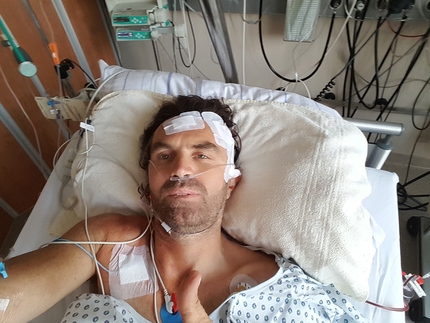
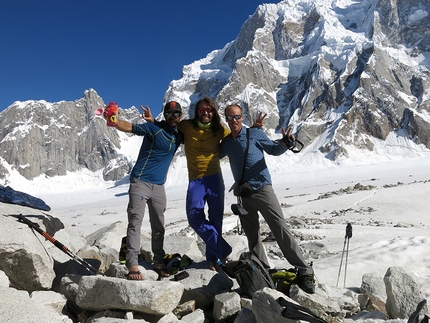
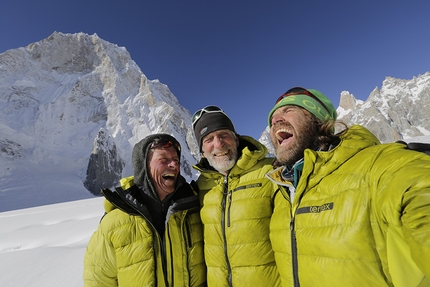
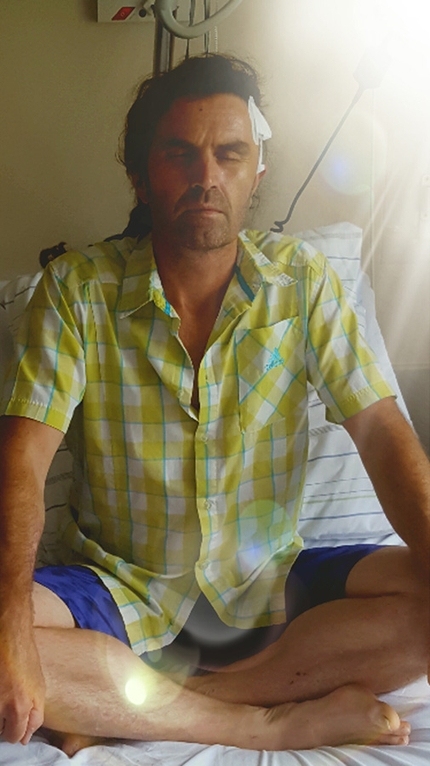
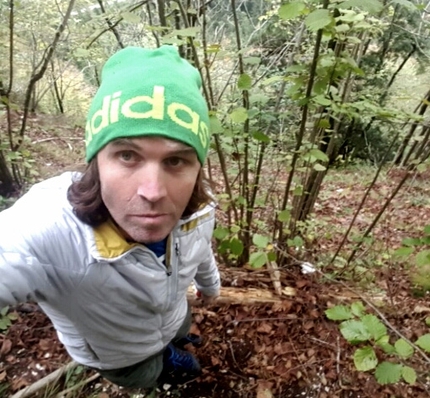
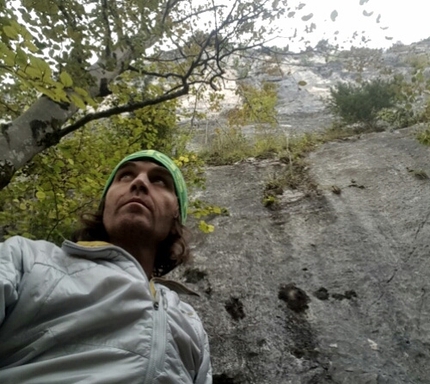
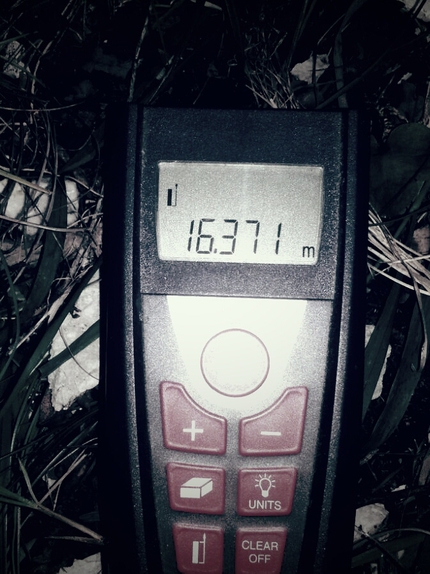
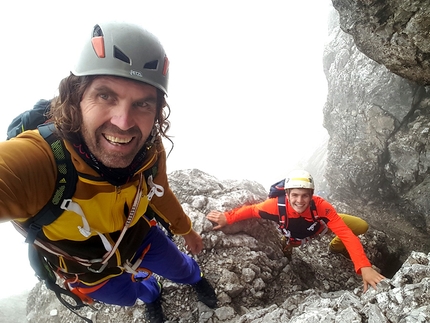
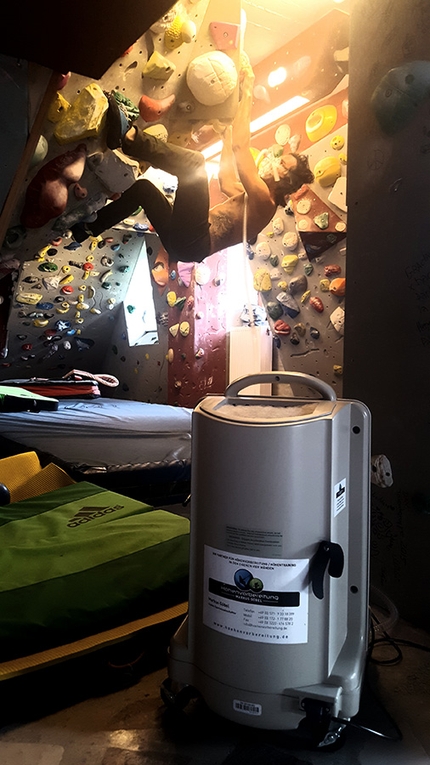
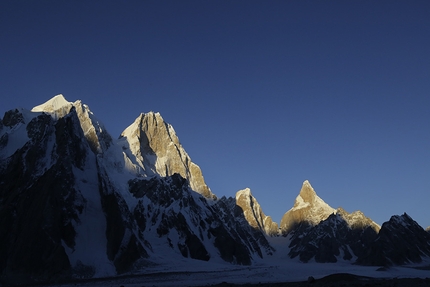
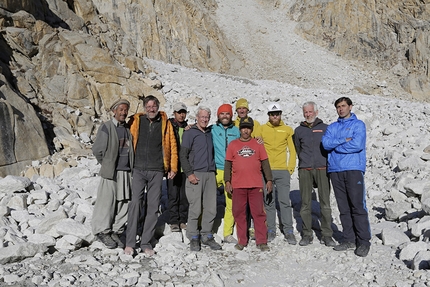
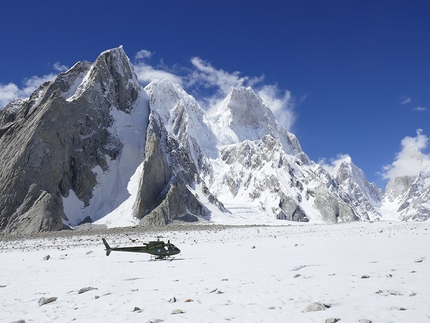
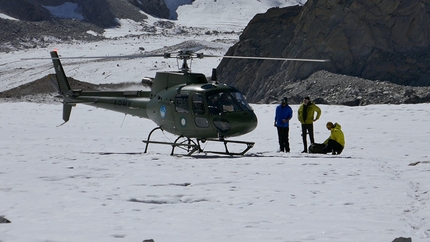
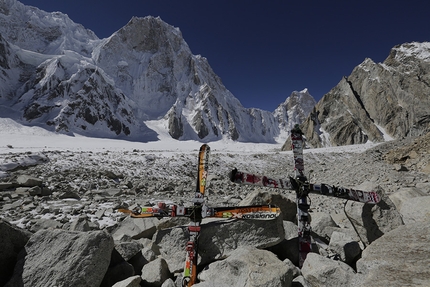
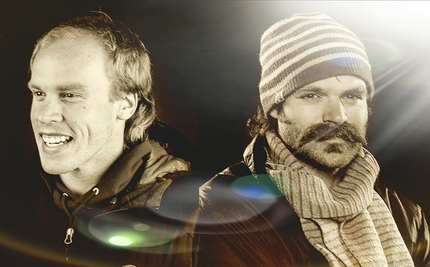
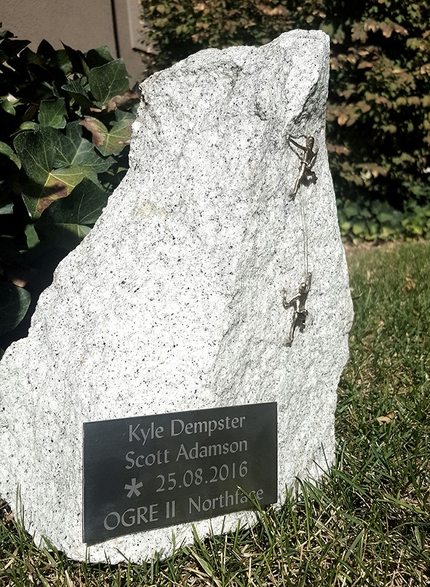
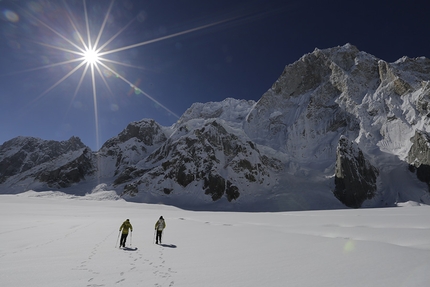
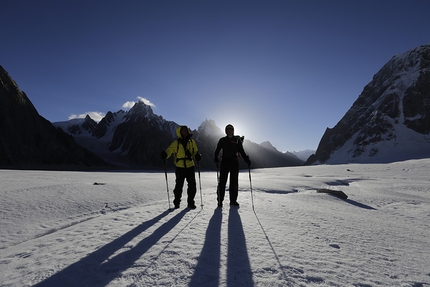
 See all photos
See all photos






















